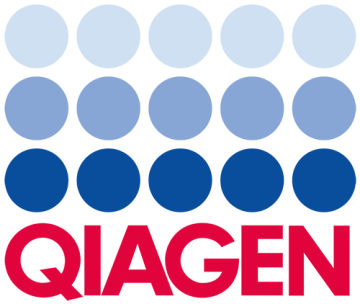Dopamine Receptor Signaling
Dopamine is a neurotransmitter that is important to vital brain functions like motor control and short term memory. Guanosine triphosphate cyclohydrolase I (GCH1) catalyzes the production of tetrahydrobiopterin (BH4), a required cofactor for tyrosine hydroxylase (TH), which is the rate-limiting enzyme in dopamine biosynthesis. TH is required for the conversion of L-tyrosine to L-DOPA which is then converted to dopamine. Dopamine is released at the synapse of the presynaptic neuron where it binds to its receptor on the postsynaptic neuron.Dopamine receptors are G-protein coupled receptors that can belong to either of two subtypes: D1-like receptor (D1, D5) or D2-like receptor (D2, D3, D4)...
Pathway Summary
Dopamine is a neurotransmitter that is important to vital brain functions like motor control and short term memory. Guanosine triphosphate cyclohydrolase I (GCH1) catalyzes the production of tetrahydrobiopterin (BH4), a required cofactor for tyrosine hydroxylase (TH), which is the rate-limiting enzyme in dopamine biosynthesis. TH is required for the conversion of L-tyrosine to L-DOPA which is then converted to dopamine. Dopamine is released at the synapse of the presynaptic neuron where it binds to its receptor on the postsynaptic neuron.Dopamine receptors are G-protein coupled receptors that can belong to either of two subtypes: D1-like receptor (D1, D5) or D2-like receptor (D2, D3, D4). D2-like receptors are coupled to Gαi which inhibits adenyl cyclase. D1 type receptors are coupled to Gαs which results in sequential activation of adenyl cyclase, cylic AMP-dependent protein kinase and the protein phosphatase-1 inhibitor DARPP-32. The increased phosphorylation that results from the combined effects of activating cyclic AMP-dependent protein kinase and inhibiting the protein phosphatase, regulates the activity of many receptors, enzymes, ion channels, and transcription factors which mediate dopamine action.Dopamine is targeted for inactivation by its uptake via dopamine transporter (DAT). It is then enzymatically degraded by catechol-O-methyl transferase (COMT) and monoamine oxidase (MAO) to homovanillic acid which enters the cerebrospinal fluid.
Dopamine Receptor Signaling Genes list
Explore Genes related to Dopamine Receptor Signaling
CALY
Human
calcyon neuron specific vesicular protein
CAMP
Human
cathelicidin antimicrobial peptide
GUCY1A1
Human
guanylate cyclase 1 soluble subunit alpha 1
GUCY1B1
Human
guanylate cyclase 1 soluble subunit beta 1
PCBD1
Human
pterin-4 alpha-carbinolamine dehydratase 1
PPM1J
Human
protein phosphatase, Mg2+/Mn2+ dependent 1J
PPM1L
Human
protein phosphatase, Mg2+/Mn2+ dependent 1L
PPP1CA
Human
protein phosphatase 1 catalytic subunit alpha
PPP1CB
Human
protein phosphatase 1 catalytic subunit beta
PPP1CC
Human
protein phosphatase 1 catalytic subunit gamma
PPP1R10
Human
protein phosphatase 1 regulatory subunit 10
PPP1R11
Human
protein phosphatase 1 regulatory inhibitor subunit 11
PPP1R12A
Human
protein phosphatase 1 regulatory subunit 12A
PPP1R14A
Human
protein phosphatase 1 regulatory inhibitor subunit 14A
PPP1R14B
Human
protein phosphatase 1 regulatory inhibitor subunit 14B
PPP1R14C
Human
protein phosphatase 1 regulatory inhibitor subunit 14C
PPP1R14D
Human
protein phosphatase 1 regulatory inhibitor subunit 14D
PPP1R1B
Human
protein phosphatase 1 regulatory inhibitor subunit 1B
PPP1R3A
Human
protein phosphatase 1 regulatory subunit 3A
PPP1R3C
Human
protein phosphatase 1 regulatory subunit 3C
PPP1R3D
Human
protein phosphatase 1 regulatory subunit 3D
PPP1R7
Human
protein phosphatase 1 regulatory subunit 7
PPP1R8
Human
protein phosphatase 1 regulatory subunit 8
PPP2CA
Human
protein phosphatase 2 catalytic subunit alpha
PPP2CB
Human
protein phosphatase 2 catalytic subunit beta
PPP2R1A
Human
protein phosphatase 2 scaffold subunit Aalpha
PPP2R1B
Human
protein phosphatase 2 scaffold subunit Abeta
PPP2R2A
Human
protein phosphatase 2 regulatory subunit Balpha
PPP2R2B
Human
protein phosphatase 2 regulatory subunit Bbeta
PPP2R2C
Human
protein phosphatase 2 regulatory subunit Bgamma
PPP2R2D
Human
protein phosphatase 2 regulatory subunit Bdelta
PPP2R3A
Human
protein phosphatase 2 regulatory subunit B''alpha
PPP2R3B
Human
protein phosphatase 2 regulatory subunit B''beta
PPP2R5A
Human
protein phosphatase 2 regulatory subunit B'alpha
PPP2R5B
Human
protein phosphatase 2 regulatory subunit B'beta
PPP2R5C
Human
protein phosphatase 2 regulatory subunit B'gamma
PPP2R5D
Human
protein phosphatase 2 regulatory subunit B'delta
PPP2R5E
Human
protein phosphatase 2 regulatory subunit B'epsilon
PRKACA
Human
protein kinase cAMP-activated catalytic subunit alpha
PRKACB
Human
protein kinase cAMP-activated catalytic subunit beta
PRKACG
Human
protein kinase cAMP-activated catalytic subunit gamma
PRKAG1
Human
protein kinase AMP-activated non-catalytic subunit gamma 1
PRKAG2
Human
protein kinase AMP-activated non-catalytic subunit gamma 2
PRKAR1A
Human
protein kinase cAMP-dependent type I regulatory subunit alpha
PRKAR1B
Human
protein kinase cAMP-dependent type I regulatory subunit beta
PRKAR2A
Human
protein kinase cAMP-dependent type II regulatory subunit alpha
PRKAR2B
Human
protein kinase cAMP-dependent type II regulatory subunit beta
PTPA
Human
protein phosphatase 2 phosphatase activator
PTS
Human
6-pyruvoyltetrahydropterin synthase
QDPR
Human
quinoid dihydropteridine reductase
SLC18A1
Human
solute carrier family 18 member A1
SLC18A2
Human
solute carrier family 18 member A2
SLC18A3
Human
solute carrier family 18 member A3
SLC6A3
Human
solute carrier family 6 member 3
Products related to Dopamine Receptor Signaling
Explore products related to Dopamine Receptor Signaling
QuantiNova LNA PCR Focus Panel Human Dopamine & Serotonin Pathway
GeneGlobe ID: SBHS-158Z | Cat. No.: 249950 | QuantiNova LNA PCR Focus Panels
QuantiNova LNA PCR Focus Panel
RT² Profiler™ PCR Array Human Dopamine & Serotonin Pathway
GeneGlobe ID: PAHS-158Z | Cat. No.: 330231 | RT2 Profiler PCR Arrays
RT2 Profiler PCR Array
QuantiNova LNA Probe PCR Focus Panel Human Dopamine & Serotonin Pathway
GeneGlobe ID: UPHS-158Z | Cat. No.: 249955 | QuantiNova LNA Probe PCR Focus Panels
QuantiNova LNA Probe PCR Focus Panel


